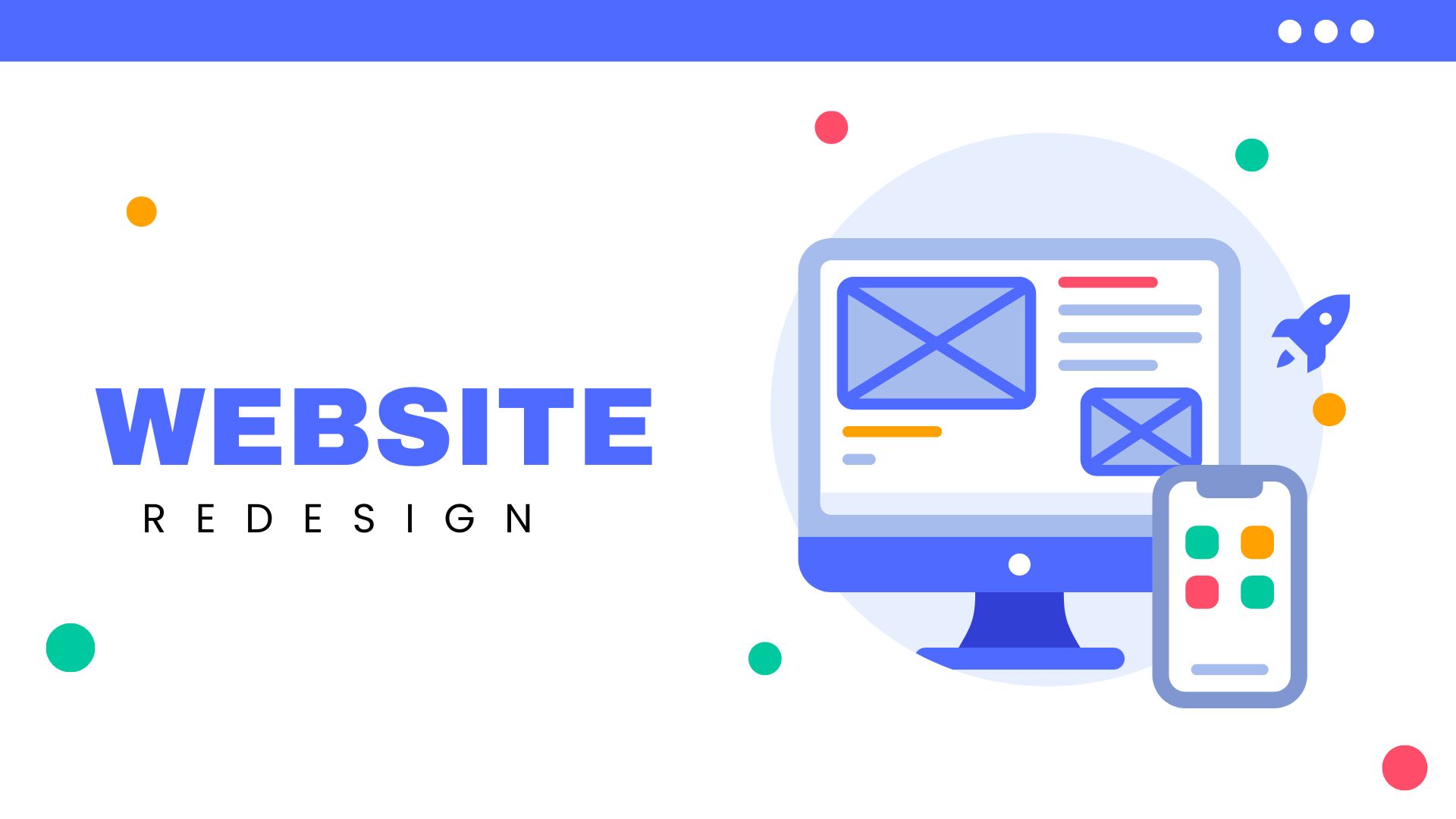A Quick Guide to Redesigning Your Website to Make It Look Relevant in 2024

Page Contents
A well-designed website could help people understand how using your products or services would benefit them more. It efficiently promotes your brand and objective and broadens your exposure to new potential customers.
Regular website updates are essential to ensure that it utilizes the newest technology, adheres to current SEO (search engine optimization) best practices, and changes with your business's needs. If the style of your website hasn't changed in a while, it could be time for an update. It will better convey the state of affairs at your business and set you up for the next years of expansion.
Website Redesign: Review
Let's first clarify what we mean when we say “redesign.” It takes a lot of work to update and improve your website to satisfy user expectations, modern internet standards, and corporate goals. A redesign of the website could include adding new features and content, enhancing navigation, modernizing the site's appearance, and making it mobile-friendly. But the goal remains the same: enhancing the platform's efficacy, visual appeal, and usefulness.
You can't always do everything yourself. Sometimes it is better to seek qualified help from a company like this: https://www.codica.com/services/ui-ux-design/website-redesign-services/.

The Reasons Behind Redesigning My Website
Redesigning your website is a major financial commitment to the long-term prosperity of your company. The following are some advantages of a well-executed website redesign:
- More skillfully handle your impending development objectives. Most certainly, your company isn't where it was a few years ago. You may be offering new goods or services. Additionally, you can see an increase in website traffic. Right now, a fresh website may better represent your company and position you for the next stage of your expansion strategy.
- Boost conversion rates. A well-designed website may increase traffic and boost conversion rates for the activities you want your target audience to do.
- Enhance the perception of your brand. Your brand should always be apparent on your website. Redesigning your design offers you the chance to better align your brand message with your company's values if the present one isn't doing the job.
- Gain the confidence of your customers. Your viewers will see a well-built website with professional graphics and educational material as reliable. This will make it more likely that they will proceed with becoming a client.
- Increased authority over material. You may use a makeover to implement a more sophisticated content management system, like WordPress. As a result, you will have more control over your continuing marketing initiatives and find it much simpler to change information on the website in the future.
- Observe industry standards. The technology behind websites is always changing. Your website will follow the most recent coding standards, function properly across all platforms and browsers, and adhere to several other contemporary industry best practices if it is redesigned.
The Importance of Website Redesign in 2024
Today, there are more than 1.5 billion web pages available on the internet. This is constant competition between each page.
The most basic reason is to maintain a modern, sleek website aesthetic. Web design trends come and go annually, so websites start looking outdated after just a few years. Because first impressions matter, visitors will form negative perceptions of brands with outdated site designs. A fresh, contemporary redesign is critical for designing innovation and relevance. Website redesigns incorporate the latest fonts, color palettes, layouts, animations, and visual styles favored by users.
Additionally, websites must be fully responsive on all devices as mobile usage continues to dominate. Google even prioritizes mobile-friendly websites in search results rankings. Visitors will quickly leave sites not optimized for seamless viewing and navigation on smartphones and tablets. Converting to a responsive design that automatically adapts to each user’s screen size will be imperative by 2024.
Enhanced personalization and customization through AI technology is also on the horizon. With machine learning integration, websites can curate individualized content and product recommendations to engage each visitor. As personalization features escalate across eCommerce and publication sites, failing to keep pace can severely damage user loyalty and trust.
Finally, refreshing website content will be non-negotiable by 2024. No matter how aesthetically pleasing the design, outdated site content will undermine credibility. Regularly adding new insightful blogs, videos, announcements, and resources indicates a business is thriving. This establishes trust and outcompetes outdated “zombie” sites.

Carrying Out a Website Redesign Step-by-Step
Here is a step-by-step guide to carrying out a website redesign:
Define Goals and Create a Plan
Establish what you want to achieve from a website redesign before getting started. Develop a strategic plan and timeline detailing your goals, target audience, content strategy, design needs, technical requirements, redesign/migration process, launch dates, etc. Define how you will measure success.
Research Competitors and Industry Trends
Conduct competitor analysis to see what website design elements are working well in your industry. Look at trends like mobile-first design, page load speeds, use of visual media, calls-to-action, etc., and brainstorm ideas to make your website stand out. User testing can also provide valuable input.
Choose a Web Design Platform
Decide whether to use a content management system like WordPress or to build a custom website. Choose a mobile-friendly, search-engine-optimized platform that will support your goals now and in the future. Take scalability into account.
Design and Develop
Work closely with your web design team throughout the design and development process. Provide style guides, branding assets, copy, imagery, and functionality/integration requirements. Ensure that UX (user experience), UI (user interface), information architecture, and technical aspects test well.
Content Creation
Create or update all text content, blog posts, videos, graphics, etc. Optimize all content for technical SEO including meta tags and alt text. Ensure content aligns with audience needs and design aesthetics.
Pre-Launch Testing
Thoroughly test all aspects of the new website before launch, including functionality, links/navigation, forms, speed, mobile responsiveness, and accessibility. Perform user testing. Fix any bugs or issues.
Launch the Website
Once testing is complete, officially launch the redesigned website. For an existing site, migrate to the new domain. Monitor analytics dashboards and social media closely post-launch and optimize as needed.
With careful planning and execution, these steps will ensure your website successfully meets its business goals. Adjust timelines as suited for simpler or more complex redesigns.
Conclusion
You may always hire a third party to do an audit for you if you're not sure if you need a redesign. You'll get an audit that lists all of the problems with your website along with potential fixes. This list may then serve as the foundation for your website makeover plan.

Public relations, digital marketing, journalism, copywriting. I have done it all so I am able to communicate any information in a professional manner. Recent work includes creating compelling digital content, and applying SEO strategies to increase website performance. I am a skilled copy editor who can manage budgets and people.



